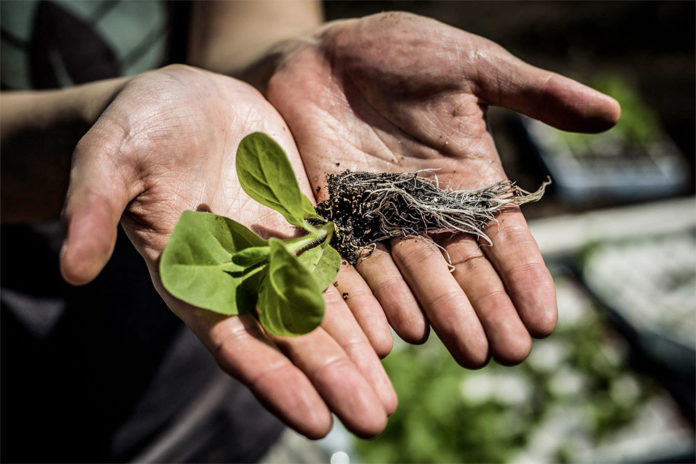Photosynthesis is a process in which plants convert light energy into chemical energy, is not a wholly efficient process. A key stage in the photosynthesis process involves an enzyme called RuBisCO grabbing carbon dioxide molecules. However, around 25 percent of the time RuBisCO incorrectly collects oxygen molecules instead, creating a plant-toxic byproduct that disrupts the entire photosynthesis process. Photorespiration is the process plants use to remove these problematic byproducts.
Most crops are plagued by a photosynthetic glitch. To deal with it, an energy-expensive process called photorespiration drastically suppresses their yield potential.
Now, for the first time, an international team of scientists from the University of Illinois and U.S. Department of Agriculture Agricultural Research Service demonstrated that by fixing a common glitch in photosynthesis, a crop’s yield could be improved by around 40 percent.
Principal investigator Donald Ort (GEGC leader/BSD/CABBI) said, “We could feed up to 200 million additional people with the calories lost to photorespiration in the Midwestern U.S. each year. Reclaiming even a portion of these calories across the world would go a long way to meeting the 21st Century’s rapidly expanding food demands—driven by population growth and more affluent high-calorie diets.”
Paul South, a research molecular biologist with the Agricultural Research Service, who works on the RIPE project at Illinois said, “Photorespiration is anti-photosynthesis. It costs the plant precious energy and resources that it could have invested in photosynthesis to produce more growth and yield.”
Photorespiration normally takes a complicated route through three compartments in the plant cell. Scientists engineered alternate pathways to reroute the process, drastically shortening the trip and saving enough resources to boost plant growth by 40 percent. This is the first time that an engineered photorespiration fix has been tested in real-world agronomic conditions.
Scientists started by engineering three alternate routes to replace the circuitous native pathway. To optimize the new routes, they planned genetic constructs utilizing diverse sets of promoters and genes, basically making a suite of one of a kind guides. They stretch tried these guides in 1,700 plants to winnow down the top performers.
More than two years of replicated field studies, they found that these engineered plants grew faster, grow taller, and delivered around 40 percent more biomass, the vast majority of which was found in 50-percent-larger stems.
The group tried their theories in tobacco: a perfect model plant for crop research because it is easier to change and test than food crops, yet not at all like elective plant models, it develops a leaf canopy and can be tried in the field. Presently, the group is making an interpretation of these discoveries to help the yield of soybean, cowpea, rice, potato, tomato, and eggplant.
Amanda Cavanagh, an Illinois postdoctoral researcher working on the RIPE project said, “Rubisco has even more trouble picking out carbon dioxide from oxygen as it gets hotter, causing more photorespiration. Our goal is to build better plants that can take the heat today and in the future, to help equip farmers with the technology they need to feed the world.”
While it will probably take over 10 years for this innovation to be converted into food crops and accomplish regulatory approval, RIPE and its supporters are focused on guaranteeing that smallholder farmers, especially in Sub-Saharan Africa and Southeast Asia, will have sovereignty free access to the majority of the undertaking’s achievements.
The study was published in the journal Science.
